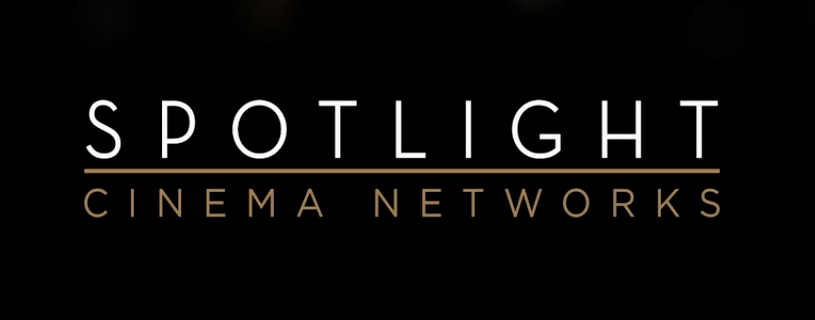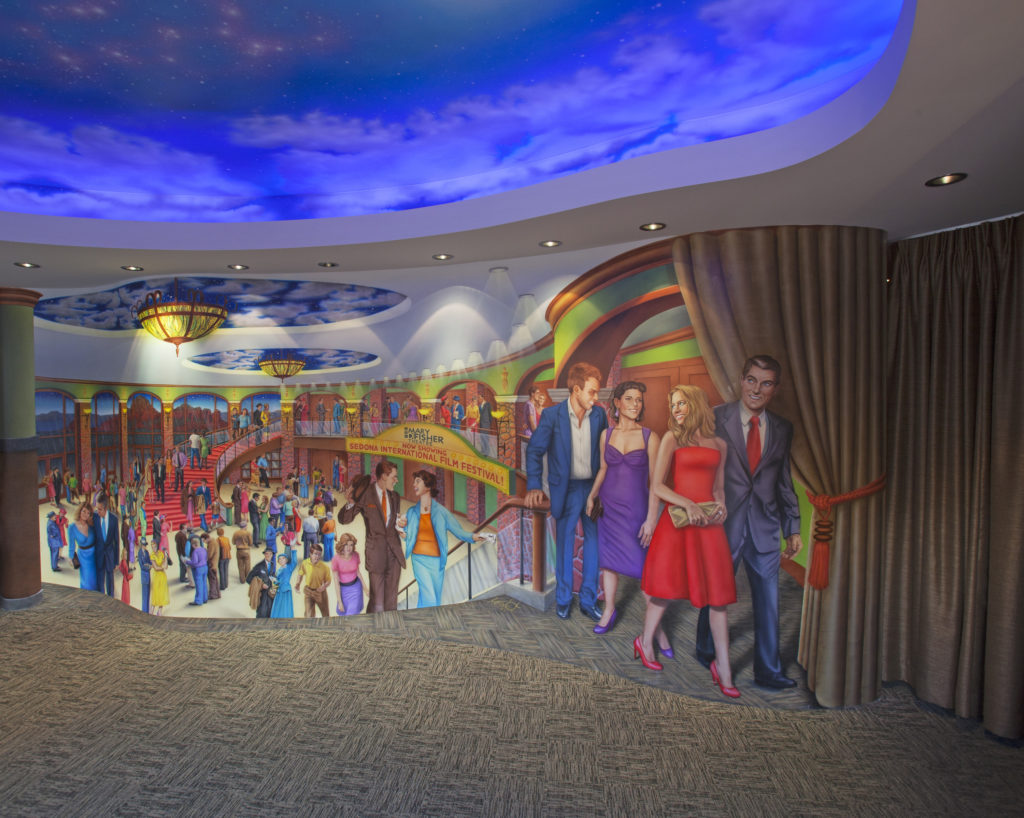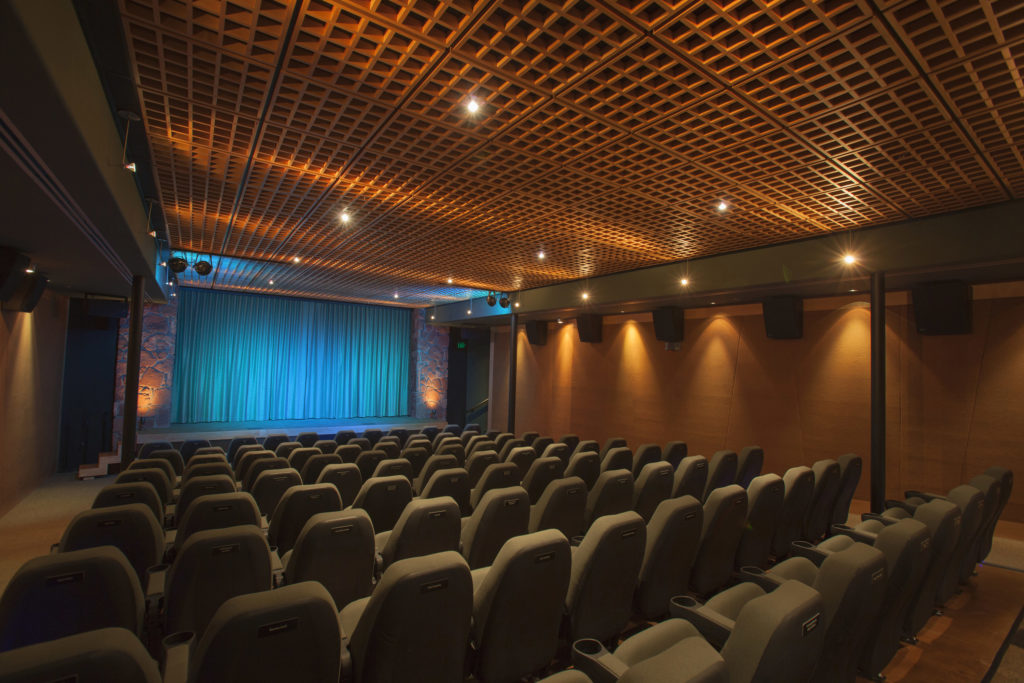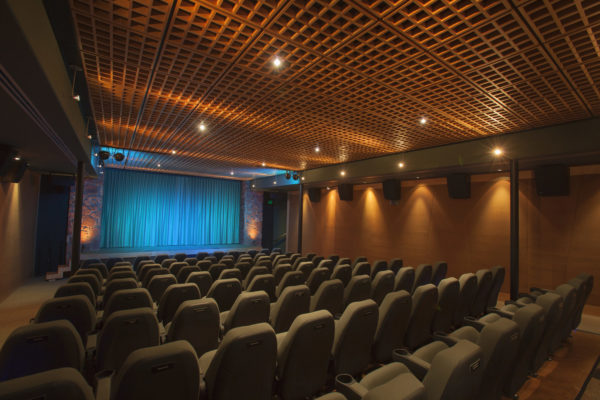As the cinema industry begins to emerge from the Covid-19 pandemic, Boxoffice Pro and Spotlight Cinema Networks are partnering to profile movie theaters and influential industry figures from across the country and ask them to share their first-person accounts of bringing the movies back to the big screen.
Sponsored by

Listen to This Week’s Episode Below and Subscribe to The Boxoffice Podcast on Any Major Podcast Platform.
Mary D. Fisher Theatre
Sedona, Arizona
Interview with Patrick Schweiss, Executive Director
Can you give us some background on the Mary D. Fisher Theatre and its connection to the Sedona International Film Festival? And who is Mary D. Fisher?
We were a festival before we were a theater. The Sedona International Film Festival is turning 28 this year. We’re very proud of that. And the Mary D. Fisher Theatre is about to turn 10. Back in 2011, we realized that we had become much, much more than just a once-a-year film festival. The festival had grown from three days to nine days since its inception. We were renting one of the multiplexes across the street on 45 of the 52 Tuesdays to bring special events in throughout the year. We realized, why are we doing that when we could just build our own theater and have an art house movie venue for Sedona?
So we investigated and looked into this building that used to be a bank. It’s kind of a funny-looking building. I often tell people, it’s one of the ugliest buildings in Sedona, and you’ll find the cutest little art house theater in it. Everyone agrees it’s absolutely amazing. It was built as a bank long ago, and then became a call center for a marketing company. And then you walk in, and you’re mystified by the beauty of this gorgeous 112-seat theater in the most nondescript building.
At that time, Mary D. Fisher was on my board of directors. She’s an incredible philanthropist, artist, humanitarian. She was the keynote speaker in 1992 at the Republican National Convention. She was one of the first women to publicly acknowledge she was HIV positive, that it wasn’t just a gay man’s disease and that we have to pay attention to this. So she became the face of AIDS awareness and HIV awareness and gave this incredible speech at the Republican National Convention.
She devoted the rest of her life to doing wonderful things philanthropically and in the arts. She’s an artist and a fabric designer. Her family was Fisher Oil up in Detroit. Her father, Max Fisher, and her mother, Marjorie, instilled a sense of philanthropic excellence in all of the kids. They established foundations, and wherever they were living they gave very generously. Mary’s passion was film and the arts. She fell in love with the idea of us building our own little theater and made it possible for us. So we’re very, very grateful to Mary Fisher and to all of our supporters who have really poured tens and hundreds of thousands of dollars into supporting us over the years. It’s been an amazing, amazing run of nine and a half, now going on 10, years of our art house theater. The community has totally supported it. So much so that we’re about to embark on an expansion campaign of adding a second screen to the theater. We’re really excited about that.
What’s your day-to-day programming like, aside from when the film festival is going on?
[We screen] two films a day, every day of the year, here at the Mary D. Fisher. We have a four o’clock and seven o’clock show. Strictly art house, foreign, that kind of product. We have a wonderful partnership with the megaplex across the street—we rent their facilities during the film festival. They are really committed to the big box office films, the Hollywood blockbusters, the first-run films. We don’t do any of that. We strictly focus on art house fare and foreign films and documentaries and those type of things that wouldn’t normally make it to a theatrical run in a megaplex. Our audiences really respect that and really love that we’re bringing some culture and some extra film events and things that they normally wouldn’t be able to see if we weren’t here.
From your website, it looks like your programming is quite eclectic—even some nonfilm content, like a live magic and comedy show I see on the schedule.
We had several people within the course of a month a couple of years ago come up to us and say, “You’re the cultural heart of Sedona. We experience so many wonderful things when we come to the Mary D. Fisher Theatre.”
On any given week, we’ll have two art house movies that will open. We’ll have the Met Opera. We’ll have a ballet from the Bolshoi on-screen. We’ll have a London West End production. We’ll have a discussion series. And we’ll have a live show. It’s an eclectic mix, as you said. A combination of really wonderful art house theater fare, alternative content, and some live performances. We purposely built the theater so that the screen could move back on tracks. We have a small performance space—nine feet by 19 and a half feet. We can do some smaller productions. We’re the home for the improv troupe here in Sedona. Poetry slams. All sorts of wonderful live events. It’s this wonderful, eclectic, artsy, cultural mix. We’re very proud that our own members have labeled us the “cultural heart of Sedona,” because we really want people to experience that.
We had a couple in from Toronto that came to me one night and said, “You don’t know us, but we’ve been here for a week. We’re from Toronto. Five of the seven nights we were in Sedona, we were here at your theater experiencing something different every night.” It was such a rewarding thing to hear, that even visitors consider us a viable way to spend their time and their money here in Sedona, checking out some things that wouldn’t normally be on a vacation agenda. We get stories like that all the time from people that come in to visit. And our locals! Our locals will be here five, six times a week, catching different things.

A festival experience is different from a standard screening—each film has fewer screenings, so it feels more exclusive, more like an event. There might be an intro or a Q&A. It really sounds like the Mary D. Fisher Theatre has been inspired by that festival ethos.
We’re about so much more than film. We call it an experience. You can go anywhere and see a film. Even at home, on your laptop. Everybody does it. You can go to the multiplexes—and there’s nothing wrong with that. There’s a great market for that.
You often go to art house venues for the experience. And that experience is exactly what you say: a little bit of that festival feel, where you’ve got Q&As or Zoom Q&As or a discussion happening after the film. We always tease and say we’ve got a year-round festival happening here in Sedona, because there are so many films we’re bringing in each week. It almost does feel like there’s a film festival almost every day here at the Mary D. Fisher Theatre. It’s exciting. It’s exactly the vibe that we’re going for. We want people to come to the films and say, “Wow, that was so much more than a movie!” And then talk about it and tell their friends.
As someone who has experience both running an art house theater and on the festival circuit (as the executive director of the Sedona International Film Festival), what are some lessons that the art house world can take from how film festivals create unique experiences?
People are thirsty for so much more now. There’s a new streaming service popping up every single day, much to the chagrin of us theater owners and managers. Ultimately, we love that streaming services exist. There’s a great market for that. As long as people are experiencing films, they should experience them any way they can. But for us, getting people to have that communal experience in a theater surrounded by other movie lovers and having that opportunity for conversation—that’s what it’s all about. It enriches the experience.
That’s what I would love to impart to all our colleagues, from the megaplex to other art house theaters. That experience is so appreciated by your audience. It takes going to the movies to the next level. And it’s something that is so easy to do, especially now—you can dial up a filmmaker, or someone affiliated with the film, for almost every screening and have that enhanced experience. And people go away talking about it. You don’t get that when you’re watching a movie on your laptop at home or on the TV at home. Number one, you don’t get that communal experience of seeing a film on the big screen in the dark, the way they’re meant to be experienced, surrounded by other people. And then having that conversation. Even if there’s not a conversation from a filmmaker at the end of the film, just hearing what’s happening in the lobby. As people leave, the conversations and the dialogue that happens is absolutely magical. To be able to take that experience and make it not just, in our case, the nine days of our festival but a 365-day-a-year experience is something really quite extraordinary.

Given that you’re such an integral part of the cultural community in Sedona, what have you found to be the best ways to maintain strong communication with your customers, pre-Covid, during the shutdown period, and now?
I know that a lot of the other house art house theaters also have membership programs, but we have a really, really strong, very dedicated membership program. A very generous membership program. In Sedona itself, we are the largest member-supported nonprofit organization. We’re very proud of that. We engage with them constantly, daily through emails, and keep them updated on what’s happening.
We always realized our members were incredibly important to us, but it never was proven so much as during Covid. They came out of the woodwork. We, like all theaters, had to close. We were closed five months of 2020. We were lucky enough to open at the end of August [2020] and have been open ever since. During the five months we were closed, we tried to find creative ways—as we all did—to keep our audiences engaged in our product and supporting us even when they couldn’t be here for a movie.
We started by doing a free shorts film festival online. We had incredible support. We had just completed our film festival, and I got permission from our shorts filmmakers to share their films with our audience. When the pandemic hit, when we had to shut down, we sent them a free short film at one o’clock every day, with a little clicker at the bottom saying, “Please help support us while we’re closed. We are keeping all of our employees employed.” And asking them to donate. Which they did. We did a membership campaign, which usually happens in April and May. Again, it was right during the heart of being closed down. And people gave so generously and gave extra donations, because they knew we were keeping our employees employed and that we were sending them things daily to watch and enjoy.
You’re not just saying “give us money.” You’re providing entertainment and then bringing up donations.
Right! And the “give us money” either wasn’t asked or was a subtle thing at the very end, saying, “If you enjoyed this, please consider supporting us. Any donation helps.” And we would get $5, $20, $200, $5,000 at different times, just because people felt compelled. We were keeping them engaged. And we hadn’t lost sight of how important they are to us. And that helped us.
You work with Spotlight Cinema Networks—both screening their pre-show and showing content from their event cinema outfit, CineLife Entertainment. Can you talk a bit about your relationship with Spotlight and how it’s helped the Mary D. Fisher Theatre through the recovery process?
They are such an important partner to us. We started with them years ago with their on-screen ads. It’s such a no-brainer for theaters. They do all the work and sell the ads. We have the right to show them or not show them. We get to pick what works for our audiences, and 99 percent of the time it’s everything they do. And you get this magical check that shows up, because you’ve shown their ads! They provide such an incredible opportunity for theaters and a great marketing opportunity for their advertisers to get in front of our customers’ eyeballs. The art house theater crowd is usually a higher-educated crowd. Our demographic is older. They have dispensable income. They come to movies and events that are a little more expensive than [you’ll find at] the regular cineplex. So their ads are getting seen by a really prime audience.
And now, with the addition of their cinema events and the special alternative content they do, it’s just phenomenal. I think we book almost everything that they make available, because it’s such a fit for our audience. It provides wonderful cultural events that we can program. So it’s great revenue for us, great revenue for CineLife Entertainment, and great for our audience to experience something cultural that they wouldn’t normally get to experience.
We’re also excited because, with the addition of the second theater, we’ll be able to expand and even do more of those programs that Spotlight Cinema Networks and CineLife Entertainment offer. We’re excited about the opportunities that’s going to present. Getting in front of more people with those messages and those programs and providing more cultural experiences is what it’s all about.



Share this post